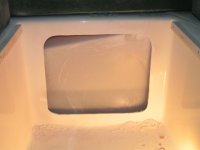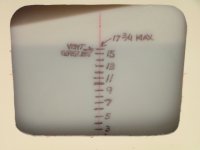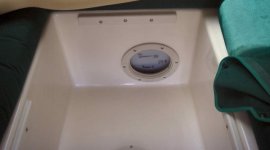RichardW
New member
- Joined
- Oct 13, 2005
- Messages
- 110
- Reaction score
- 0
- C Dory Year
- 2000
- C Dory Model
- 22 Cruiser
- Vessel Name
- C Eagle
For interested Brats, I just added a water level sight tube to my commuter version CD 22. I understand that most standard CDs already have a water level indicator, but my CD came without a water tank. I made a few other mods as well which can be seen in this album group: http://www.c-brats.com/modules.php?set_ ... _album.php
I got the idea of the colored ball from Sea Wolf (thanks, Joe) and it makes checking the water tank very quick - a real convenience to us. The sight tube is simply a loop with the lower end teeing into the line exiting the tank bottom and the upper end teeinng into the air vent line entering the top of the tank. The tube clamps are spaced so that the upper clamp is full and the middle clamp is 50%. This project only took an hour to install because of easy access to the water lines.
I got the idea of the colored ball from Sea Wolf (thanks, Joe) and it makes checking the water tank very quick - a real convenience to us. The sight tube is simply a loop with the lower end teeing into the line exiting the tank bottom and the upper end teeinng into the air vent line entering the top of the tank. The tube clamps are spaced so that the upper clamp is full and the middle clamp is 50%. This project only took an hour to install because of easy access to the water lines.






